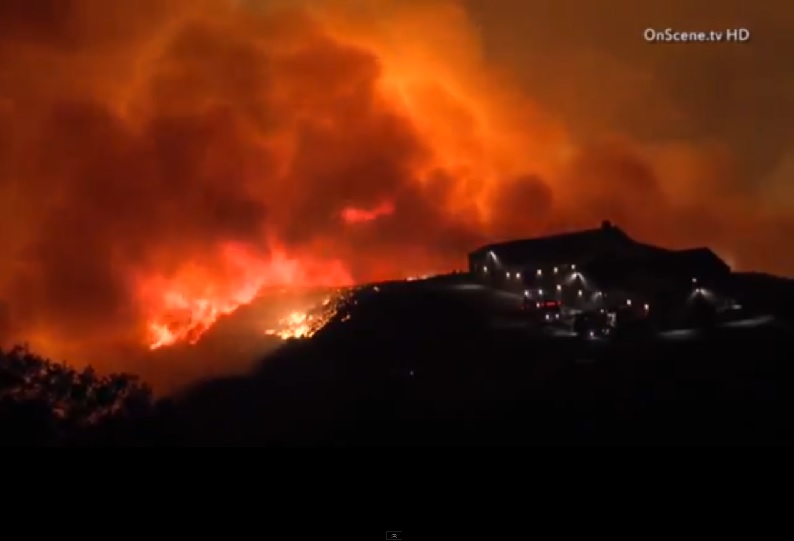California Blaze Makes its Way to Ocean

A massive fire in Ventura County, Calif., that started early Thursday (May 2) has gobbled up thousands of acres of brush and is headed toward the ocean near Malibu.
The blaze erupted at about 6:30 a.m. local time (9:30 a.m. EDT) Thursday off the Southbound 101 freeway, threatening hundreds of homes in Newbury Park and Camarillo, the LA Times reported. The flames had consumed 10,000 acres of brush and was 10 percent contained as of early Friday morning, NBC News reported, and had reached within "seven or eight miles" of the city of Malibu.
The so-called Springs fire caused the shutdown of a 9-mile stretch of Pacific Coast Highway and the evacuation of hundreds of Ventura County residents as it crept toward the coast. [The 10 Worst US Natural Disasters]
Very low humidity and balmy spring temperatures, combined with the dry brush and the blustering Santa Ana winds, created the perfect conditions for the wildfire, which is unusual for this time of year.
"This normally is not the fire season. It's usually more toward November, when winds are high and things are dry," said fire protection engineer Peter Sunderland of the University of Maryland, in College Park. "But in California, you can have bad fires any time of year," Sunderland added.
What makes this fire worrisome is its proximity to populated areas. People have built houses right on the brink of wilderness areas, said forestry specialist Bill Stewart of the University of California, Berkeley. "You have houses right next to very flammable hillsides," Stewart told LiveScience. Before people built there, fires might burn up just a few shrubs. "Instead of shrubs, now they can burn down million-dollar homes," he said.
At state and national labs, scientists run complex computer models of wildfires, inputting data in real time to track the spread of the blaze. If the wind speed and direction stay the same, tracking the fire is fairly straightforward, Stewart said, but unfortunately, winds usually change. Although the models are getting better, there aren't that many weather stations, and it can take up to eight hours for simulations to run.
Sign up for the Live Science daily newsletter now
Get the world’s most fascinating discoveries delivered straight to your inbox.
In Ventura County, there's a big fire approximately every decade, Stewart said. "Given how risky these fires are, we're probably underinvesting in how they work."
Follow Tanya Lewis on Twitter and Google+. Follow us @livescience, Facebook & Google+. Original article on LiveScience.com.










